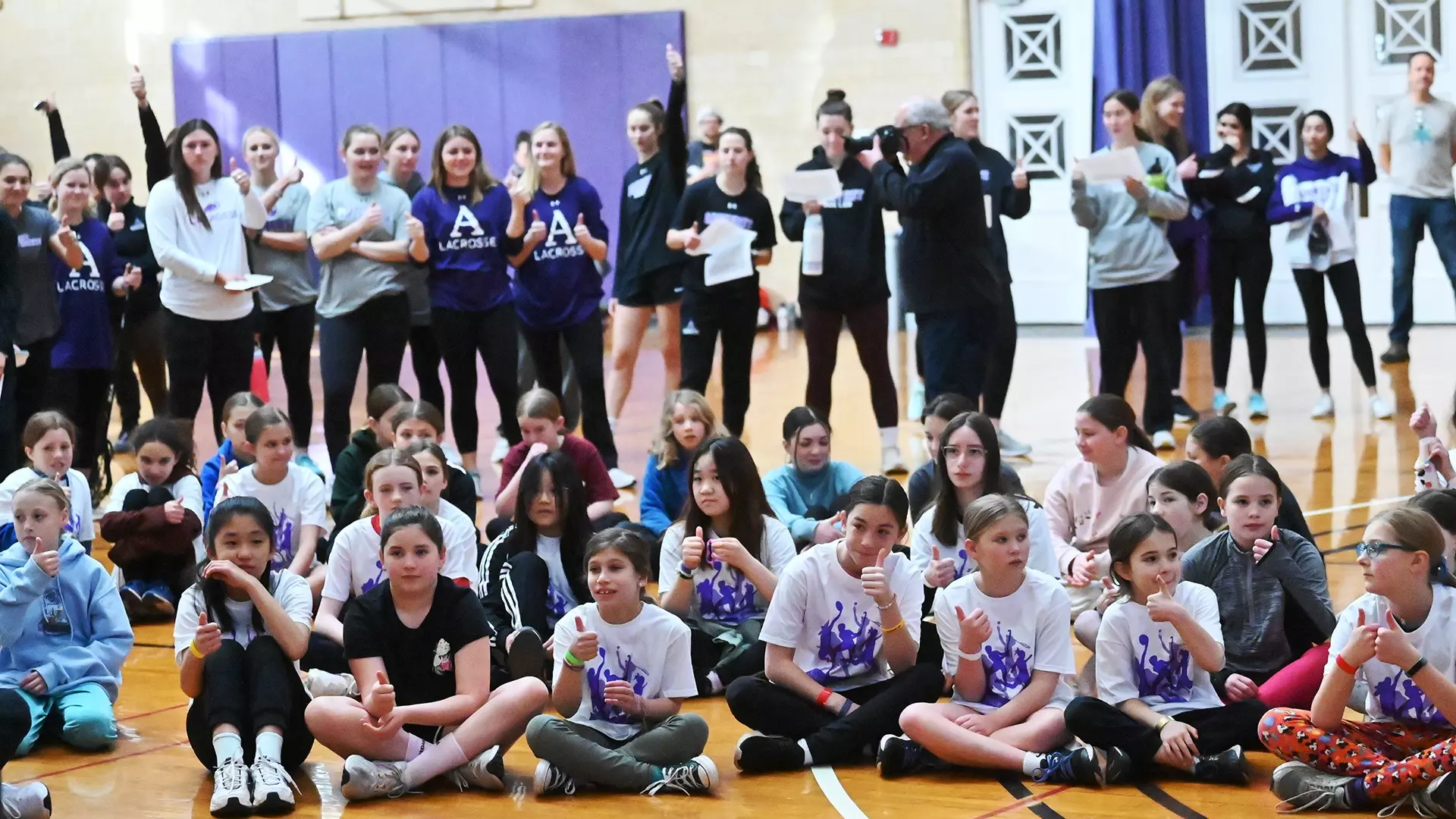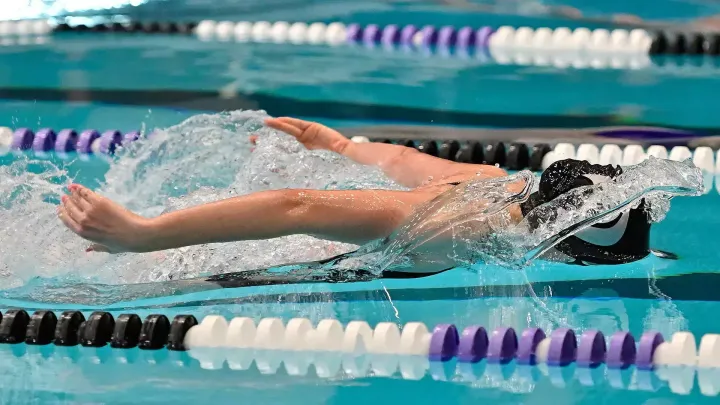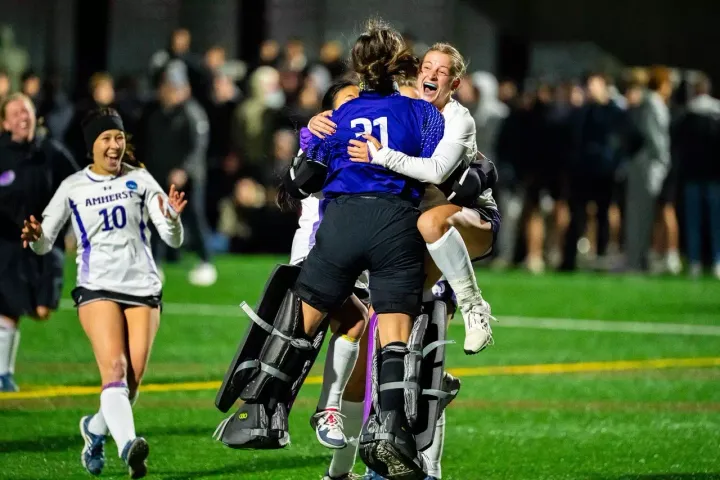Athletics Departments Honors National Girls and Women in Sports Day
On Saturday, the Town of Amherst and Amherst College hosted an event to celebrate National Girls and Women in Sports Day. Managing Sports Editor Helena Henson ’28 goes through the day and reflects on the future of women in sports.

On Saturday, the college’s athletics department celebrated National Girls and Women in Sports Day in partnership with the Amherst Recreation Department. The Alumni Gym hosted dozens of four- to seven-year-old girls and nonbinary youth to highlight the potential sports can offer.
After introductory speeches from Associate Director of Athletics Jennifer Chuks-Crabill and Charlotte Domittner ’25 that highlighted the power of the communities and friendships built by women’s sports, participants were able to cycle through activities and games hosted by athletes from many of the women’s sports teams. The events allowed the participants to try new sports and get to talk to current students. Afterward, some of the participants and their families cheered on the women’s basketball team in their 66-43 victory over Connecticut College in LeFrak Gymnasium.
In its 39-year history, National Girls and Women in Sports Day has long been aided by the organizational efforts of the Women’s Sports Foundation (WSF). Founded by Billie Jean King in 1974, the WSF was founded following the enactment of Title IX, a federal law that requires educational institutions to devote equal funding and resources to women’s and men’s athletic programs. The landmark law led to a massive increase in female participation in athletics, with high schools and colleges seeing 1,057% and 614% increase in sports programs by 2024, respectively.
For young girls, the horizon of professional sports has never looked brighter. Many new and expansive professional leagues have emerged in recent years, including the Women’s Lacrosse League, the Professional Women’s Hockey League, Unrivaled Basketball and more, offering women athletes bigger platforms and chances to earn wages through their sport. In addition, the 2024 Olympic and Paralympic Games became the first to reach gender equity with an equal number of female and male athletes. Providing these role models on the local, national, and global level will inspire the future generation of women and non-binary athletes to “reach their potential in sport and in life.”




Comments ()